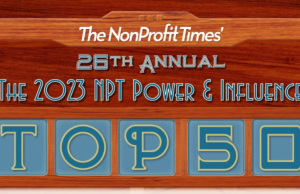A new study suggests that the impact of diversity efforts on nonprofit levers of power, whether top-level (chief executive officer or executive director) nonprofit administrators, board chairs or boards as a whole, yields varied results.
In some cases, outcomes are felt more strongly on organizational operational functions; in others, different combinations of diversity (such as ethno-racial or gender variety among administrators, board chairs or boards) results in different impacts on economic or social outcomes of external-facing organizational activities.
As part of the article “Decomposing the Impact of Leadership Diversity Among Nonprofit Organizations”, researchers combined surveys with top-level individuals and 2017 Form 990 data from 737 nonprofits. Organizations in which a single individual served as both the top executive and board chair were excluded from the study to allow the researchers to compare interactions between these two roles.
The authors are: Ruth Sessler Bernstein, Associate Professor of Nonprofit Management within the Business Administration Division of Seaver College at Malibu, California-based Pepperdine University, and Christopher Fredette, Professor of Management and Strategy within the Odette School of Business at the University of Windsor, Windsor, Ontario, Canada.
There is no one simple answer regarding the impact of diversity within each leadership aspect on beneficial outcomes. Overall, diversity within all aspects is important: as the report authors note, “[L]eadership diversity signals moral and ethical commitment to equity by legitimizing the value of underrepresented communities and promotes engagement with and participation in power-redistribution efforts.” The authors did note that diversifying board composition was more likely to have an impact on near-term board goals, while top-level executive diversity had a stronger benefit on organizational performance outcomes.
But breaking down the impact of racial or gender diversity offered a mixed bag of results. Gender diversity of top-level leaders and board chairs positively impacted only one qualification: diversity and inclusion competence. Racial diversity of chairs resulted in stronger profit margin and revenue concentration, as well as internal awareness, external engagement, diversity and inclusion competence and board culture.
The authors acknowledge that nonprofit leadership and governance is highly interdependent: individuals within each element of the leadership triad (executive leaders, boards and board chairs) often collaborate in ways not measurable in terms of organizational performance or change. The researchers attempted to determine whether diversity within each of these roles had an impact on an organization’s overall functioning.
There is also a question of lasting impact – what impact does diversity have on near-term board responsibilities, such as providing fiduciary oversight, maintaining strategic direction or engaging stakeholders, and how does that impact carry over to longer-term results?
Each area of exploration comes with further questions. Board effectiveness is subject to the interpersonal skills of individual members. When the collaborative activities of top-level leaders are considered, these considerations may leave out actions they take within their organizations by fiat. And looking at activities of board chairs, who straddle board activities and leadership roles, may provide difficulties in disentangling board activities from leadership activities.








